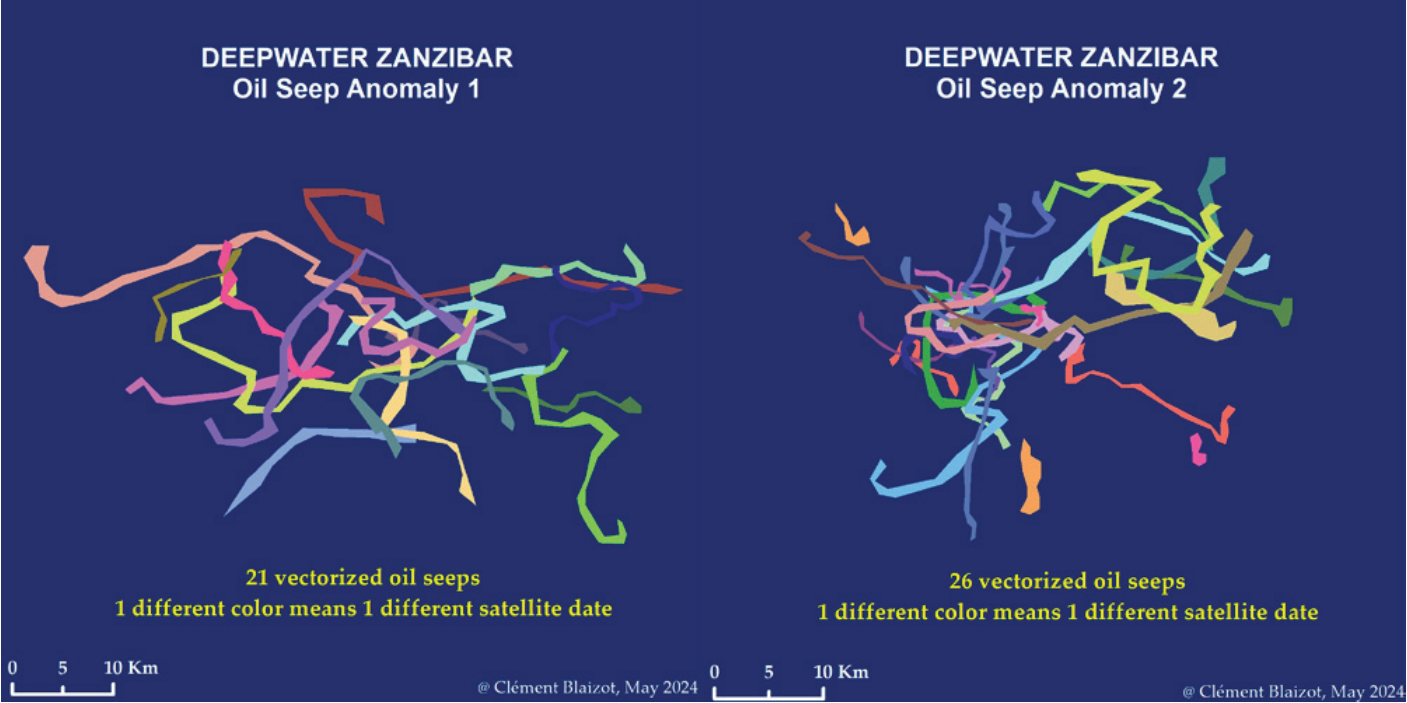Launched in March this year, the Zanzibar 1st Licensing Round offers a large frontier area with both oil and gas potential. There are 8 blocks available, named Block 1A to H, varying size between 2,846 km² to 5,666 km² and situated in water depths between 500 m and 3,000 m.
The fact that this is the first offshore licensing round does not mean that drilling for oil and gas never happened in the area though. In fact, exploration started quite some years ago. It was between 1952 and 1964 that bp and Shell started to drill the first wells in the area, including a few attempts on the Zanzibar and Pemba islands. Unfortunately, none of these wells discovered any commercial quantities of oil or gas. That said, a total of five wells were drilled on Pemba, one of which did result in oil shows, which is a first indication of an active petroleum system.
THE EAST AFRICA MARGIN
The margin of East Africa has a complex geological history thanks to multiple phases of rifting with different stretching directions. The main phase of rifting, which led to the opening of the Indian Ocean, lasted from the Pliensbachian in the Early Jurassic to the Bajocian in Middle Jurassic times. Evaporites and marine shales were deposited during the Toarcian in the rift basins, marking the onset of the Indian Ocean marine incursion. This resulted in good-quality oil-prone source rocks. The giant gas discoveries in Tanzania and Mozambique are believed to be sourced from overmature Jurassic or, possibly, deeper Permian age Karoo shales.
This is further supported by the presence of an oil seep on the same island. Further work on this seep has indicated that the oil can be traced to a marine source rock, which in turn can be correlated to an interval of Campanian – Maastrichtian Upper Cretaceous shales. The oil shows from the Pemba-5 well seem different though, which suggests that another source rock might be present in the area as well.
THE FIRST OFFSHORE OIL DISCOVERY IN EAST AFRICA
The map shown here, which provides a summary of the data available for the area in which the current licensing round is being held, shows an interesting discovery just north of Zanzibar in Kenyan waters. It is the so-called Sunbird discovery that was made by BG, with Australia-based Pancontinental as partner, in 2014. The discovery was announced as being the first offshore oil discovery in East Africa, after intersecting a gross oil column of 14 m beneath a gross gas column of almost 30 m. The reservoir is not a very common one, being a Miocene pinnacle reef limestone. The depth at which the discovery was made is shallow: The hydrocarbons were found at around 900 m. Net reservoir thickness turned out to be 9.2 m in the oil zone and 28.3 m in the gas zone. Press releases at the time mention that BG had difficulties analysing the well results due to the loss of drilling mud, seawater and remedial cement that had to be pumped in the reservoir accordingly. This is not a huge surprise given the fact that limestone reservoirs can have extremely porous sections. The shallow depth of the Sunbird find and the planned TD at 3,000 m below sea[1]level suggests that the well also had a deeper target. It is unknown if anything was found below the Miocene, however. The commerciality of the oil accumulation in the reefal limestones probably turned out to be marginal, as no further drilling activity seems to have taken place in the area since.
Seeps indicate a petroleum system
Offshore discoveries have yet to be made, and offshore wells have yet to be drilled too, but there are indications that an active petroleum system is also present in Zanzibar waters. Clément Blaizot, who runs an offshore satellite oil seep database of about 30 millions of km², performed an initial study to scan the area that is currently open for bids for the presence of oil seeps. The maps shown here are from the deep-water area in the east of the available acreage and illustrate two high repeat seep anomalies.

Seismic lines have previously been acquired across the area now open for bids, and SLB is supporting the Zanzibar government to make these lines available to any interested party.

